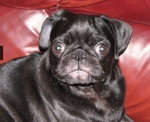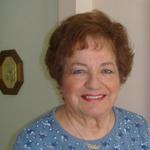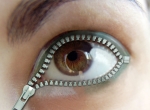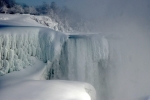SleepyHead Tutorial Under Underconstruction
SleepyHead Tutorial Under Underconstruction
Okay, I am working on the glossary for SleepyHead. That is pretty cut and dry. What I need from the members is some specific questions about what problems that they are having understand what they see or what to do.
We will put it all here for the time being and when we are finished I will edit and polish it for another thread as the official tutorial. The thread is the work thread.
We will put it all here for the time being and when we are finished I will edit and polish it for another thread as the official tutorial. The thread is the work thread.
_________________
| Machine: AirCurve™ 10 VAuto BiLevel Machine with HumidAir™ Heated Humidifier |
| Additional Comments: Mask Bleep Eclipse https://bleepsleep.com/the-eclipse/ |
I may have to RISE but I refuse to SHINE.
Re: SleepyHead Tutorial Under Underconstruction
The first thing I had a problem was was how to access the data after the initial download.
Check me thread, "Where did Sleepyhead Go?"
Check me thread, "Where did Sleepyhead Go?"
Last edited by Starlette on Thu Jan 05, 2012 10:11 pm, edited 1 time in total.
- MaxDarkside
- Posts: 1199
- Joined: Sun Dec 18, 2011 4:21 pm
- Location: Minneapolis, MN
Re: SleepyHead Tutorial Under Underconstruction
OK, here's an obscure one, but I figured out the solution, so I'll give that too, and you can edit as you see fit, or ignore this if it is too obscure.
Q: I went to a different time zone and I changed the time zone on my computer (Central->Mountain), then I imported my data to update to see the last night's new data. I got duplicate plots of the same data on the same charts for each day, shifted by one hour. Very confusing. What do I do?
My Answer: I went to the menu and dropped down "Data -> Advanced -> Purge CPAP Data -> All Data for CPAP Machine" and purged the data, then clicked the SD disk icon and re-imported. All was good.
I'm not sure this was the proper thing to do, but it seemed to work. I don't know if I would have lost notes and such though, because I have not used that feature.
Q: I went to a different time zone and I changed the time zone on my computer (Central->Mountain), then I imported my data to update to see the last night's new data. I got duplicate plots of the same data on the same charts for each day, shifted by one hour. Very confusing. What do I do?
My Answer: I went to the menu and dropped down "Data -> Advanced -> Purge CPAP Data -> All Data for CPAP Machine" and purged the data, then clicked the SD disk icon and re-imported. All was good.
I'm not sure this was the proper thing to do, but it seemed to work. I don't know if I would have lost notes and such though, because I have not used that feature.
_________________
| Mask: Quattro™ FX Full Face CPAP Mask with Headgear |
| Humidifier: S9™ Series H5i™ Heated Humidifier with Climate Control |
| Additional Comments: CMS-50E Oximeter, Zeo Bedside, Software: Comm'l grade AI analytics server & tools & SleepyHead |
Do or Die... Sleep Apnea killed me, but I came back. Click for my story
Please visit my My Apnea Analytics blog. Maybe we can help each other.
54 yrs, 6' 1", 160->172 lbs
Please visit my My Apnea Analytics blog. Maybe we can help each other.
54 yrs, 6' 1", 160->172 lbs
Re: SleepyHead Tutorial Under Underconstruction
Can we have a list of all the graphs we see, ie: flow limitation, tidal volume,minute ventilation,etc, and a brief explanation of what they mean and what are "normal" ranges? Thanks for the hard work you're doing.
_________________
| Mask: Mirage Quattro™ Full Face CPAP Mask with Headgear |
| Additional Comments: 14/8.4,PS=4, UMFF, 02@2L, |
"Do or Do Not-There Is No Try"-"Yoda"
"We are what we repeatedly do,so excellence
is not an act but a habit"-"Aristotle"
DEAR HUBBY BEGAN CPAP 9/2/08
"We are what we repeatedly do,so excellence
is not an act but a habit"-"Aristotle"
DEAR HUBBY BEGAN CPAP 9/2/08
- Kairosgrammy
- Posts: 529
- Joined: Mon Jan 02, 2012 8:13 am
Re: SleepyHead Tutorial Under Underconstruction
The whole darn thing. I don't understand what I'm looking at, what all the squiggly lines mean, what's good, what's bad. I understand ahi but then under events its has pressure pulse 32 events. I have no clue what that is talking about but if I slept 6 hours, that's 5 an hour and so whatever event it is, it can't be good. Can it? Maybe what I really need is a short course explaining all the terminology and what is good/bad or indifferent. Heavens, I've used a cpap for 8 years or therabouts and I am clueless and uneducated. *sigh*
Pugsy wrote:Okay, I am working on the glossary for SleepyHead. That is pretty cut and dry. What I need from the members is some specific questions about what problems that they are having understand what they see or what to do.
We will put it all here for the time being and when we are finished I will edit and polish it for another thread as the official tutorial. The thread is the work thread.
_________________
| Mask: Swift™ FX For Her Nasal Pillow CPAP Mask with Headgear |
| Additional Comments: I'm starting to use sleepyhead. |
- stacyrings
- Posts: 26
- Joined: Wed Mar 16, 2011 8:53 am
- Location: Dallas, TX
Re: SleepyHead Tutorial Under Underconstruction
This!!!!Kairosgrammy wrote:The whole darn thing. I don't understand what I'm looking at, what all the squiggly lines mean, what's good, what's bad. I understand ahi but then under events its has pressure pulse 32 events. I have no clue what that is talking about but if I slept 6 hours, that's 5 an hour and so whatever event it is, it can't be good. Can it? Maybe what I really need is a short course explaining all the terminology and what is good/bad or indifferent. Heavens, I've used a cpap for 8 years or therabouts and I am clueless and uneducated. *sigh*Pugsy wrote:Okay, I am working on the glossary for SleepyHead. That is pretty cut and dry. What I need from the members is some specific questions about what problems that they are having understand what they see or what to do.
We will put it all here for the time being and when we are finished I will edit and polish it for another thread as the official tutorial. The thread is the work thread.
Another thing I'd like to add is how to post the graphs here for people to see. I've seen others do that but I can't figure it out.
_________________
| Mask: Quattro™ FX Full Face CPAP Mask with Headgear |
| Humidifier: S9™ Series H5i™ Heated Humidifier with Climate Control |
| Additional Comments: Sleepyhead software, Pressure: 18/14 |
Re: SleepyHead Tutorial Under Underconstruction
Yes I will do this...I will need some help on determining the normal ranges though. That will take some research.DoriC wrote:Can we have a list of all the graphs we see, ie: flow limitation, tidal volume,minute ventilation,etc, and a brief explanation of what they mean and what are "normal" ranges? Thanks for the hard work you're doing.
This one I will put in a separate catagory but it is basically how to install and use the software.Starlette wrote:The first thing I had a problem was was how to access the data after the initial download.
Check me thread, "Where did Sleepyhead Go?"
It doesn't yet have an installer to put the short cut icon on the desktop so me have to make our own.
Steps....Download SleepyHead zipped file to where ever you can find the files easy.
Right click on the zipped files and choose "extract all" which will give you an unzipped file that you can open with individual files in there. Right now there are 16 but later there may be more.
While you are looking at those files in that folder look at the last file that says SleepyHead and it has file type as "Application". you may or may not see a .exe after application....this file is what you click on to open SleepyHead. Right now while you are looking at it right click on that SLeepyHead application file and choose pin to start menu or pin to task bar and the copy will make a copy of that file and place it where you have chosen to place it. That is your shortcut so that you can click on it to launch SleepyHead without having to go into the folder each time...Much easier. I have mine on my start menu..I have other things pinned to start menu for various reason. I prefer taskbar not to have stuff on it but it works either way....so each person can choose what they wish to use.
_________________
| Machine: AirCurve™ 10 VAuto BiLevel Machine with HumidAir™ Heated Humidifier |
| Additional Comments: Mask Bleep Eclipse https://bleepsleep.com/the-eclipse/ |
I may have to RISE but I refuse to SHINE.
Re: SleepyHead Tutorial Under Underconstruction
Easy, I have this composed in my little cheat sheet folder. First part how to create a screen shot if you don't know how...Second part about uploading the image of the report to a photohosting site of your choice.stacyrings wrote:Another thing I'd like to add is how to post the graphs here for people to see. I've seen others do that but I can't figure it out
Open the image to full size so it is easily read.
I use Vista snipping tool to create a screen shot and crop the image at the same time.
Prt/scr key will also take a screen shot if using XP. If laptop is used sometimes the Fn key has to be pushed at the same time as the prt/scr key
I think windows 7 Home Premium has the snipping tool, Basic may not.
Once the screen shot is created save it in jpg format.
Upload the image to a host site. I use Photobucket it is free, there are others.
Once the image is uploaded then copy the ENTIRE IMG address. Be sure to include the opening and closing IMG in brackets. Paste that copied address into a post here.
Use the preview button. If you can't see the image try again because if you can't see it we can't.
_________________
| Machine: AirCurve™ 10 VAuto BiLevel Machine with HumidAir™ Heated Humidifier |
| Additional Comments: Mask Bleep Eclipse https://bleepsleep.com/the-eclipse/ |
I may have to RISE but I refuse to SHINE.
Re: SleepyHead Tutorial Under Underconstruction
Pugsy,
No suggestions, but I can volunteer to help with editing or writing stuff. Just tell me what you might want me to do (including some research for those "normal" ranges of things) and I'll be glad to help.
No suggestions, but I can volunteer to help with editing or writing stuff. Just tell me what you might want me to do (including some research for those "normal" ranges of things) and I'll be glad to help.
_________________
| Machine: DreamStation BiPAP® Auto Machine |
| Mask: Swift™ FX Nasal Pillow CPAP Mask with Headgear |
| Additional Comments: PR System DreamStation and Humidifier. Max IPAP = 9, Min EPAP=4, Rise time setting = 3, minPS = 3, maxPS=5 |
Re: SleepyHead Tutorial Under Underconstruction
Partial Glossary...I need to add some stuff...also if we or going to have Devilbiss..I am going to need their terminology and definitions.
A-Flex
An algorithm for adjusting CPAP pressure during the later stage of inspiration and during exhalation to improve patient comfort based on a user-defined gain setting.
AHI
Apnea/Hypopnea Index. A count of apnea and hypopnea events per hour.
Apnea
An apnea is indicated if there is an 80% reduction in airflow for 10 seconds compared to the average airflow over an extended period of several minutes or if there is no airflow detected for 10 seconds.
ASV
Adaptive Servo-Ventilation (Respironics definition per Encore Pro is Automatic Servo-Ventiliation which is not quite correct). Pertains to a low-pressure, electrically driven ventilator system with electronic pressure control. The device’s pressure controls are adjusted to deliver pressure support for patient ventilatory assistance. The device augments patient breathing by supplying pressurized air through a patient circuit. It senses the patient’s breathing effort by monitoring airflow in the patient circuit and adjusts its output to assist in inhalation and exhalation.
Auto-CPAP
Continuous Positive Airway Pressure (CPAP) that automatically titrates the pressure up and down based on the varying requirements of the patient.
AVAPS
Average Volume Assured Pressure Support therapy mode
Average AHI
The average AHI (Apnea/Hypopnea Index) is the total number of apneas and hypopneas that occurred during sleep divided by the number of therapy hours.
Average Hours of Use
The total number of hours the patient received therapy divided by the total days of use.
Average Time in Large Leak Per Day
Displays the average amount of time the patient spent with excessive air leakage that will compromise therapy. This could be the result of poor mask fitting.
Bi-Flex
A small amount of pressure relief (levels of 1, 2, or 3) applied during the latter stages of inspiration and during active exhalation (the beginning part of exhalation).
Bi-Level
Two different positive pressure levels (IPAP/EPAP). The dual pressure levels provide a more natural means of delivering pressure support therapy to the patient resulting in improved patient comfort. The pressure toggles between an inspiratory and an expiratory pressure during spontaneous breathing.
BPM
Breaths per Minute, or beats per minute in the context of Heart Rate/Pulse oximetry.
C-Flex
A small amount of pressure relief applied during active exhalation (the beginning part of exhalation).
Cheyne-Stokes Respiration
(pinched from Wikipedia, full link:http://en.wikipedia.org/wiki/Cheyne-Stokes_respiration)
Cheyne-Stokes respiration is an abnormal pattern of breathing characterized by progressively deeper and sometimes faster breathing, followed by a gradual decrease that results in a temporary stop in breathing called an apnea. The pattern repeats, with each cycle usually taking 30 seconds to 2 minutes. It is an oscillation of ventilation between apnea and hyperpnea with a crescendo-diminuendo pattern, and is associated with changing serum partial pressures of oxygen and carbon dioxide.
Cheyne-Stokes respiration and periodic breathing are the two regions on a spectrum of severity of oscillatory tidal volume. The distinction lies in what we observe happening at the trough of ventilation: if there is apnea, we describe it as Cheyne-Stokes respiration (since apnea is a prominent feature in their original description); if there is only hypopnea (abnormally small but not absent breaths) then we call it periodic breathing. Physiologically and mathematically, the phenomena are less different than they appear, because breaths that are smaller than the anatomical dead space do not actually ventilate the lung and so - from the point of view of gas concentrations in an alveolus - the nadir of hypopnea in periodic breathing may be indistinguishable from apnea.
These phenomena can occur during wakefulness or during sleep, where they are called the Central sleep apnea syndrome (CSAS).
System One calls lumps this together with Periodic breathing..
cm H2O
Measurement unit of pressure; centimeters of water.
Compliance
The consistency and accuracy with which a patient follows the regimen prescribed by a physician or other health professional.
Compliance Graph
Provides a view of the patient's therapy usage and the patient's compliance.
CPAP
Continuous Positive Airway Pressure
CSR
Short for Cheyne-Stokes Respiration
Daily Events Per Hour
Number of events per hour for one night of therapy.
Desaturation
An indication that the patient's measured SpO2 is reduced by 3% or more.
Diagnostic RDI
Diagnostic Respiratory Disturbance Index. The total number of breathing events divided by the total sleep time without therapy.
DME
Distributor of Durable Medical Equipment
EPAP
Expiratory Positive Airway Pressure
Exhaled Tidal Volume
The amount of air passing out of the lungs for each breath.
FL
Flow Limitation is a partial obstruction of the airway as detected by a change in the shape of the flow signal.
Flow Limitation Index
Changes in flow limitation are recorded as events. The Flow Limitation Index is calculated by the total number of flow limitation events per night divided by the hours of use. Note: The average is calculated by taking the total number of events divided by the number of therapy days. This can be used to indicate if there has been a significant degradation in the flow signal, resulting in a pressure increase. This value is only reported on auto pressure machines.
GMT
Greenwich Mean Time (time zone), also known as Universal Coordinated Time (UTC)
Hours of Usage
Shows patterns of use displayed by date.
Hypopnea
An hypopnea is indicated if there is approximately 40% reduction in airflow for a duration of between 10 and 60 seconds, compared to the average airflow over an extended period of several minutes. Following a reduction in airflow, the therapy device must see two recovery breaths in order to label the event as a potential hypopnea.
Hypopnea Index
The Hypopnea Index is calculated by the total number of hypopnea events per night divided by the hours of use.
IPAP
Inspiratory Positive Airway Pressure
Leak
The amount of air leakage in the patient circuit.
LL
Large Leak
LPM
Liters per Minute..L/min
MaP
Minutes at Pressure
Mean Pressure
Average device pressure multiplied by the time at pressure divided by the total time in the device.
Minute Vent
The average minute ventilation (tidal volume x rate).
NRAH Index
Non-Responsive Apnea/Hypopnea Index. A non-responsive apnea/hypopnea flag is generated when a patient has apneas and or hypopneas that do not respond to increased pressure from a pressure therapy device. It is detected when the patient has at least 2 apneas and/or hypopneas, the pressure level of the therapy device increases at least 3 cm H2O, and the patient continues to have apneas and/or hypopneas.
Total Events / Total Session Hours = Index.
Obstructive Apnea
Obstructive Apnea (OA) is a temporary cessation of airflow caused by a collapse of the airway either full or partial without an accompanying cessation of respiratory effort.
Obstructive Apnea Index
The Obstructive Apnea Index is calculated by the total number of Obstructive Apnea events per night divided by the hours of use.
OSA
Obstructive Sleep Apnea
Patient-Triggered Breaths
Breaths initiated by the patient.
Peak Average Pressure
The largest average CPAP Pressure in the date range.
Pressure
Pressure settings and average delivered pressures are indicated as colored lines on reports.
Ramp
During ramp time, a patient starts therapy at a pressure lower than the prescription. The pressure is incrementally increased over time while the patient is falling asleep.
Ramp Time
The time over which the pressure increases from the initial low-value, to the prescription value.
RERA
Respiratory Event Related Arousal... a sequence of breaths characterized by increasing respiratory effort leading to an arousal from sleep, but which does not meet criteria for an apnea or hypopnea.”
RDI
Respiratory Disturbance Index
REMstar Auto Flags
Measurements recorded in 30 second intervals for the following measures: NR = Non-Responsive Apnea/Hypopnea event OA = Obstructive Apnea event H = Hypopnea event FL = Flow Limitation event S = Snoring event AHI = Apnea/Hypopnea Index (the sum of the Apneas and Hypopneas during the night divided by the number of therapy hours).
S/T
Spontaneous/Timed therapy mode
SD Card
A SD Card (Secure Digital Card) is an integrated circuit which is housed in a compact, rugged plastic enclosure. SD Cards are designed to store data and to enable the transfer of data between devices equipped with SD Card slots.
Session
A length of time in which therapy has been delivered with breaks lasting no more than one hour.
Sigh
A breath that is delivered every 100 mandatory or assisted breaths at 150% of the normal volume.
Sleep Therapy Flags
Measurements recorded in 30 second intervals for the following measures: OA = Obstructive Apnea event H = Hypopnea event S = Snoring event AHI = Apnea/Hypopnea Index (the sum of the Apneas and Hypopneas during the night divided by the number of therapy hours).
SmartCard
A type of memory card inserted in some therapy devices that records the patient's device usage information. The SmartCard can be removed for easy download of the data into EncorePro.
SmartCard Reader/Writer
The SmartCard reader/writer is used to download compliance data from a SmartCard.
Snore
A loud upper airway breathing sound during sleep, without episodes of apnea.
Split Night
A mode that enables the auto CPAP algorithm to be delayed by a pre-selectable time interval.
Tidal Volume
The amount of air passing in and out of the lungs for each breath (mL).
Total AHI
The sum of the Apneas and Hypopneas divided by the number of therapy hours.
VAPS
Volume Assured Pressure Support, breath by breath correction towards a target tidal volume.
Vibratory Snore (VS) Index
The Vibratory Snore Index is the total number of vibratory snoring events per night divided by the hours of use.
VTE
Estimated average exhaled tidal volume.
A-Flex
An algorithm for adjusting CPAP pressure during the later stage of inspiration and during exhalation to improve patient comfort based on a user-defined gain setting.
AHI
Apnea/Hypopnea Index. A count of apnea and hypopnea events per hour.
Apnea
An apnea is indicated if there is an 80% reduction in airflow for 10 seconds compared to the average airflow over an extended period of several minutes or if there is no airflow detected for 10 seconds.
ASV
Adaptive Servo-Ventilation (Respironics definition per Encore Pro is Automatic Servo-Ventiliation which is not quite correct). Pertains to a low-pressure, electrically driven ventilator system with electronic pressure control. The device’s pressure controls are adjusted to deliver pressure support for patient ventilatory assistance. The device augments patient breathing by supplying pressurized air through a patient circuit. It senses the patient’s breathing effort by monitoring airflow in the patient circuit and adjusts its output to assist in inhalation and exhalation.
Auto-CPAP
Continuous Positive Airway Pressure (CPAP) that automatically titrates the pressure up and down based on the varying requirements of the patient.
AVAPS
Average Volume Assured Pressure Support therapy mode
Average AHI
The average AHI (Apnea/Hypopnea Index) is the total number of apneas and hypopneas that occurred during sleep divided by the number of therapy hours.
Average Hours of Use
The total number of hours the patient received therapy divided by the total days of use.
Average Time in Large Leak Per Day
Displays the average amount of time the patient spent with excessive air leakage that will compromise therapy. This could be the result of poor mask fitting.
Bi-Flex
A small amount of pressure relief (levels of 1, 2, or 3) applied during the latter stages of inspiration and during active exhalation (the beginning part of exhalation).
Bi-Level
Two different positive pressure levels (IPAP/EPAP). The dual pressure levels provide a more natural means of delivering pressure support therapy to the patient resulting in improved patient comfort. The pressure toggles between an inspiratory and an expiratory pressure during spontaneous breathing.
BPM
Breaths per Minute, or beats per minute in the context of Heart Rate/Pulse oximetry.
C-Flex
A small amount of pressure relief applied during active exhalation (the beginning part of exhalation).
Cheyne-Stokes Respiration
(pinched from Wikipedia, full link:http://en.wikipedia.org/wiki/Cheyne-Stokes_respiration)
Cheyne-Stokes respiration is an abnormal pattern of breathing characterized by progressively deeper and sometimes faster breathing, followed by a gradual decrease that results in a temporary stop in breathing called an apnea. The pattern repeats, with each cycle usually taking 30 seconds to 2 minutes. It is an oscillation of ventilation between apnea and hyperpnea with a crescendo-diminuendo pattern, and is associated with changing serum partial pressures of oxygen and carbon dioxide.
Cheyne-Stokes respiration and periodic breathing are the two regions on a spectrum of severity of oscillatory tidal volume. The distinction lies in what we observe happening at the trough of ventilation: if there is apnea, we describe it as Cheyne-Stokes respiration (since apnea is a prominent feature in their original description); if there is only hypopnea (abnormally small but not absent breaths) then we call it periodic breathing. Physiologically and mathematically, the phenomena are less different than they appear, because breaths that are smaller than the anatomical dead space do not actually ventilate the lung and so - from the point of view of gas concentrations in an alveolus - the nadir of hypopnea in periodic breathing may be indistinguishable from apnea.
These phenomena can occur during wakefulness or during sleep, where they are called the Central sleep apnea syndrome (CSAS).
System One calls lumps this together with Periodic breathing..
cm H2O
Measurement unit of pressure; centimeters of water.
Compliance
The consistency and accuracy with which a patient follows the regimen prescribed by a physician or other health professional.
Compliance Graph
Provides a view of the patient's therapy usage and the patient's compliance.
CPAP
Continuous Positive Airway Pressure
CSR
Short for Cheyne-Stokes Respiration
Daily Events Per Hour
Number of events per hour for one night of therapy.
Desaturation
An indication that the patient's measured SpO2 is reduced by 3% or more.
Diagnostic RDI
Diagnostic Respiratory Disturbance Index. The total number of breathing events divided by the total sleep time without therapy.
DME
Distributor of Durable Medical Equipment
EPAP
Expiratory Positive Airway Pressure
Exhaled Tidal Volume
The amount of air passing out of the lungs for each breath.
FL
Flow Limitation is a partial obstruction of the airway as detected by a change in the shape of the flow signal.
Flow Limitation Index
Changes in flow limitation are recorded as events. The Flow Limitation Index is calculated by the total number of flow limitation events per night divided by the hours of use. Note: The average is calculated by taking the total number of events divided by the number of therapy days. This can be used to indicate if there has been a significant degradation in the flow signal, resulting in a pressure increase. This value is only reported on auto pressure machines.
GMT
Greenwich Mean Time (time zone), also known as Universal Coordinated Time (UTC)
Hours of Usage
Shows patterns of use displayed by date.
Hypopnea
An hypopnea is indicated if there is approximately 40% reduction in airflow for a duration of between 10 and 60 seconds, compared to the average airflow over an extended period of several minutes. Following a reduction in airflow, the therapy device must see two recovery breaths in order to label the event as a potential hypopnea.
Hypopnea Index
The Hypopnea Index is calculated by the total number of hypopnea events per night divided by the hours of use.
IPAP
Inspiratory Positive Airway Pressure
Leak
The amount of air leakage in the patient circuit.
LL
Large Leak
LPM
Liters per Minute..L/min
MaP
Minutes at Pressure
Mean Pressure
Average device pressure multiplied by the time at pressure divided by the total time in the device.
Minute Vent
The average minute ventilation (tidal volume x rate).
NRAH Index
Non-Responsive Apnea/Hypopnea Index. A non-responsive apnea/hypopnea flag is generated when a patient has apneas and or hypopneas that do not respond to increased pressure from a pressure therapy device. It is detected when the patient has at least 2 apneas and/or hypopneas, the pressure level of the therapy device increases at least 3 cm H2O, and the patient continues to have apneas and/or hypopneas.
Total Events / Total Session Hours = Index.
Obstructive Apnea
Obstructive Apnea (OA) is a temporary cessation of airflow caused by a collapse of the airway either full or partial without an accompanying cessation of respiratory effort.
Obstructive Apnea Index
The Obstructive Apnea Index is calculated by the total number of Obstructive Apnea events per night divided by the hours of use.
OSA
Obstructive Sleep Apnea
Patient-Triggered Breaths
Breaths initiated by the patient.
Peak Average Pressure
The largest average CPAP Pressure in the date range.
Pressure
Pressure settings and average delivered pressures are indicated as colored lines on reports.
Ramp
During ramp time, a patient starts therapy at a pressure lower than the prescription. The pressure is incrementally increased over time while the patient is falling asleep.
Ramp Time
The time over which the pressure increases from the initial low-value, to the prescription value.
RERA
Respiratory Event Related Arousal... a sequence of breaths characterized by increasing respiratory effort leading to an arousal from sleep, but which does not meet criteria for an apnea or hypopnea.”
RDI
Respiratory Disturbance Index
REMstar Auto Flags
Measurements recorded in 30 second intervals for the following measures: NR = Non-Responsive Apnea/Hypopnea event OA = Obstructive Apnea event H = Hypopnea event FL = Flow Limitation event S = Snoring event AHI = Apnea/Hypopnea Index (the sum of the Apneas and Hypopneas during the night divided by the number of therapy hours).
S/T
Spontaneous/Timed therapy mode
SD Card
A SD Card (Secure Digital Card) is an integrated circuit which is housed in a compact, rugged plastic enclosure. SD Cards are designed to store data and to enable the transfer of data between devices equipped with SD Card slots.
Session
A length of time in which therapy has been delivered with breaks lasting no more than one hour.
Sigh
A breath that is delivered every 100 mandatory or assisted breaths at 150% of the normal volume.
Sleep Therapy Flags
Measurements recorded in 30 second intervals for the following measures: OA = Obstructive Apnea event H = Hypopnea event S = Snoring event AHI = Apnea/Hypopnea Index (the sum of the Apneas and Hypopneas during the night divided by the number of therapy hours).
SmartCard
A type of memory card inserted in some therapy devices that records the patient's device usage information. The SmartCard can be removed for easy download of the data into EncorePro.
SmartCard Reader/Writer
The SmartCard reader/writer is used to download compliance data from a SmartCard.
Snore
A loud upper airway breathing sound during sleep, without episodes of apnea.
Split Night
A mode that enables the auto CPAP algorithm to be delayed by a pre-selectable time interval.
Tidal Volume
The amount of air passing in and out of the lungs for each breath (mL).
Total AHI
The sum of the Apneas and Hypopneas divided by the number of therapy hours.
VAPS
Volume Assured Pressure Support, breath by breath correction towards a target tidal volume.
Vibratory Snore (VS) Index
The Vibratory Snore Index is the total number of vibratory snoring events per night divided by the hours of use.
VTE
Estimated average exhaled tidal volume.
_________________
| Machine: AirCurve™ 10 VAuto BiLevel Machine with HumidAir™ Heated Humidifier |
| Additional Comments: Mask Bleep Eclipse https://bleepsleep.com/the-eclipse/ |
Last edited by Pugsy on Sun Jan 08, 2012 8:37 am, edited 3 times in total.
I may have to RISE but I refuse to SHINE.
- Kairosgrammy
- Posts: 529
- Joined: Mon Jan 02, 2012 8:13 am
Re: SleepyHead Tutorial Under Underconstruction
bump
_________________
| Mask: Swift™ FX For Her Nasal Pillow CPAP Mask with Headgear |
| Additional Comments: I'm starting to use sleepyhead. |
Re: SleepyHead Tutorial Under Underconstruction
Anything you can do to add helpful information just bring it on. No way can I possibly thing of everything.robysue wrote:No suggestions, but I can volunteer to help with editing or writing stuff. Just tell me what you might want me to do (including some research for those "normal" ranges of things) and I'll be glad to help.
So anything you want to put together which might help the newbies and addition to the "normals" for all those graphs.
If you think of something to explain...then explain it. I would sure appreciate it and won't have my feelings hurt one little bit if you help with the composing. I suck at composing.
This thread is just for construction stuff right now. We will polish it up later in a new thread.
_________________
| Machine: AirCurve™ 10 VAuto BiLevel Machine with HumidAir™ Heated Humidifier |
| Additional Comments: Mask Bleep Eclipse https://bleepsleep.com/the-eclipse/ |
I may have to RISE but I refuse to SHINE.
Re: SleepyHead Tutorial Under Underconstruction
The above glossary was from my Encore Pro Glossary. I will combine them later but here are some terms I got from the provider manual for the PR S1 and the ResMed S9
90% Pressure.. PR System One..The pressure at which the device spent 90% of the time at OR below.
95% Pressure.. ResMed S9..The pressure at which the device spent 95% of the time at OR below.
PB..Periodic Breathing.. A persistent waning and waxing breathing pattrn which repeats itself between 30 and 100 seconds. The nadir of the breathing pattern is characterized by at least a 40% reduction in airflow from an established baseline flow. The pattern must be present for several minutes before it can be identified as periodic breathing. No therapy adjustments are made in response to periodic breathing.
RERA Detection..System One..Respiratory effort-related arousal..defined as an arousal from sleep that follows a 10 second or longer sequence of breaths that are characterized by increasing respiratory effort, but which does not meet criteria for an apenea or hypopnea. Snoring, though usually associated with this condition need not be present. The RERA algorithm monitors for a sequence of breaths that exhibit both a subtle reduction in airflow and progressive flow limitation. If this breath sequence is terminated by a sudden increase in airflow along with the absence of flow limitation, and the event does not meet the conditions for an apnea or hypopnea, a RERA is indicated.
Flow Limitation Detection..System One..Auto Mode Only scoring only..Straight CPap or Straight BiPap modes does not score this event. The device looks for relative changes in the peak, flatness, roundness, or shape (skewness) of the inspiratory portion of the airflow waveform. These changes are observed both over a short period of time (groups of 4 breaths) and over a long period of time (several minutes). Statistical measures are used to help minimize false event detection while allowing the device to be sensitive to even small changes.
Snore detection..System One..Vibratory snore is detected when a specific frequency is detected during the inspiratory portion of the patient's breath. Vibratory snore is disabled at pressures greater than 16 cm H2O.
Apnea/Clear Airway Apnea Detection..System One.. An apnea is detected when there is an 80% reduction in airflow from a baseline for at least 10 seconds if there is no airflow detected for 10 seconds. During the apnea, one or more pressure test pulses are delivered by the device. The device evaluates the response of the patient to the test pulse(s) and assesses whether the apnea has occurred while the patient has a clear airway or an obstructed airway. The airway is determined to be clear if the pressure test pulse generates a significant amount of flow; otherwise the airway is determined to be obstructed.
Hypopnea Detection..System One..A hyponea is detected when there is an approximately 40% reduction in airflow from a baseline for at least 10 seconds.
ResMed Provider manual terminology, some are the same as PR S1 (I think PR S1 says per hour on their minute vent...I think it may be wrong)
Minute Ventilation (MV).. ResMed....Volume of air breathed in, or out within any 60 second period, expressed in L/min (5 breath moving average.
Respiratory Rate (RR) ...ResMed....Frequency of breathing, expressed as the number of breaths per minute (5 breath moving average).
Tidal Volume (Vt)...ResMed...Volume of air inspired or expired in one respiratory cycle (breath), expressed in mL (5 breath moving average).
Pressure Support...ResMed..Difference between IPAP and EPAP.
Ti...ResMed..Duration of inspiration (ie, the respiratory flow into the lungs), expressed in seconds (5 breath moving average).
Ti Max...ResMed...Maximum inspiration time in seconds.
Ti. Min..ResMed..Minimum inspiration time in seconds.
Defninitions for APneas and Hypopneas are a little different from Respironics. % are slightly different.
Apnea...When the respiratory flow decreases by more than 75% for at least 10 seconds.
Hypopnea....When the respiratory flow decreases to 50% for at least 10 seconds.
90% Pressure.. PR System One..The pressure at which the device spent 90% of the time at OR below.
95% Pressure.. ResMed S9..The pressure at which the device spent 95% of the time at OR below.
PB..Periodic Breathing.. A persistent waning and waxing breathing pattrn which repeats itself between 30 and 100 seconds. The nadir of the breathing pattern is characterized by at least a 40% reduction in airflow from an established baseline flow. The pattern must be present for several minutes before it can be identified as periodic breathing. No therapy adjustments are made in response to periodic breathing.
RERA Detection..System One..Respiratory effort-related arousal..defined as an arousal from sleep that follows a 10 second or longer sequence of breaths that are characterized by increasing respiratory effort, but which does not meet criteria for an apenea or hypopnea. Snoring, though usually associated with this condition need not be present. The RERA algorithm monitors for a sequence of breaths that exhibit both a subtle reduction in airflow and progressive flow limitation. If this breath sequence is terminated by a sudden increase in airflow along with the absence of flow limitation, and the event does not meet the conditions for an apnea or hypopnea, a RERA is indicated.
Flow Limitation Detection..System One..Auto Mode Only scoring only..Straight CPap or Straight BiPap modes does not score this event. The device looks for relative changes in the peak, flatness, roundness, or shape (skewness) of the inspiratory portion of the airflow waveform. These changes are observed both over a short period of time (groups of 4 breaths) and over a long period of time (several minutes). Statistical measures are used to help minimize false event detection while allowing the device to be sensitive to even small changes.
Snore detection..System One..Vibratory snore is detected when a specific frequency is detected during the inspiratory portion of the patient's breath. Vibratory snore is disabled at pressures greater than 16 cm H2O.
Apnea/Clear Airway Apnea Detection..System One.. An apnea is detected when there is an 80% reduction in airflow from a baseline for at least 10 seconds if there is no airflow detected for 10 seconds. During the apnea, one or more pressure test pulses are delivered by the device. The device evaluates the response of the patient to the test pulse(s) and assesses whether the apnea has occurred while the patient has a clear airway or an obstructed airway. The airway is determined to be clear if the pressure test pulse generates a significant amount of flow; otherwise the airway is determined to be obstructed.
Hypopnea Detection..System One..A hyponea is detected when there is an approximately 40% reduction in airflow from a baseline for at least 10 seconds.
ResMed Provider manual terminology, some are the same as PR S1 (I think PR S1 says per hour on their minute vent...I think it may be wrong)
Minute Ventilation (MV).. ResMed....Volume of air breathed in, or out within any 60 second period, expressed in L/min (5 breath moving average.
Respiratory Rate (RR) ...ResMed....Frequency of breathing, expressed as the number of breaths per minute (5 breath moving average).
Tidal Volume (Vt)...ResMed...Volume of air inspired or expired in one respiratory cycle (breath), expressed in mL (5 breath moving average).
Pressure Support...ResMed..Difference between IPAP and EPAP.
Ti...ResMed..Duration of inspiration (ie, the respiratory flow into the lungs), expressed in seconds (5 breath moving average).
Ti Max...ResMed...Maximum inspiration time in seconds.
Ti. Min..ResMed..Minimum inspiration time in seconds.
Defninitions for APneas and Hypopneas are a little different from Respironics. % are slightly different.
Apnea...When the respiratory flow decreases by more than 75% for at least 10 seconds.
Hypopnea....When the respiratory flow decreases to 50% for at least 10 seconds.
_________________
| Machine: AirCurve™ 10 VAuto BiLevel Machine with HumidAir™ Heated Humidifier |
| Additional Comments: Mask Bleep Eclipse https://bleepsleep.com/the-eclipse/ |
I may have to RISE but I refuse to SHINE.
Re: SleepyHead Tutorial Under Underconstruction
What is Mask pressure and how is it produced?
Event Flags. Are they calculated by sleepy head or the machine. Will the sleepy head equal rescan or encore?
user flags. What are they set for and how are they changed
Event Flags. Are they calculated by sleepy head or the machine. Will the sleepy head equal rescan or encore?
user flags. What are they set for and how are they changed
Re: SleepyHead Tutorial Under Underconstruction
I will need Jedimark to answer the questions except the one in red.ywp wrote:What is Mask pressure and how is it produced?
Event Flags. Are they calculated by sleepy head or the machine. Will the sleepy head equal rescan or encore?
user flags. What are they set for and how are they changed
I have used ResScan, Encore Viewer and Encore Pro. I prefer SLeepyHead hands down.
ResScan users who have been using it for a long time are probably very comfortable with it but I didn't care for it. But then I was used to SLeepyHead before I got ResScan.
_________________
| Machine: AirCurve™ 10 VAuto BiLevel Machine with HumidAir™ Heated Humidifier |
| Additional Comments: Mask Bleep Eclipse https://bleepsleep.com/the-eclipse/ |
I may have to RISE but I refuse to SHINE.


















